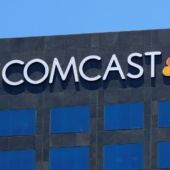This transcript was prepared by a transcription service. This version may not be in its final form and may be updated.
Jeremy Owens: Hello, and welcome to On Watch by MarketWatch. I’m Jeremy Owens. It’s been another busy week here at MarketWatch as we cover the election. While the Newsroom continues to dive into Donald Trump’s win and what it means for the economy, we wanted to make sure you didn’t miss some other very important numbers, Big Tech’s earnings and AI promises. So today we’re going to visit with Dan Gallagher, the Wall Street Journal’s Heard on the Street tech columnist. Plus, we’ll tell you about other news we’re watching this election week, including the Federal Reserve meeting and how all of it will impact your wallet. Last week, Microsoft executives finally answered Wall Street’s big question, how much is the company actually making from generative AI? The company expects to surpass 10 billion in annual revenue from AI next quarter.
That number might’ve pushed the stock higher three or six months ago, but after this report, the market had a scary Halloween. Microsoft’s stock dropped 6%, pulling the S&P 500 into the red on the last day of October. That ended a five-month winning streak for the market. The problem? Microsoft’s forecast was a little shy of Wall Street expectations for cloud growth, which just felt so 2022. And it wasn’t just Microsoft. All the Big Tech stocks seemed to move less on their executives’ AI promises and more on actual financial performance. So what happened in this round of earnings, and what does it mean for the future? To answer those questions, I brought in Dan Gallagher, who covers tech for the Wall Street Journal’s Heard on the Street column. Here’s what he told me about what happened with Microsoft.
Dan Gallagher: I think especially if you compare to this time last year when AI hype was just driving everything and these companies could raise the CapEx to (inaudible) levels and just blow money out the door, and get rewarded for it because investors saw all upside in the future and they realized obviously, nothing was going to happen that year. ChatGPT had just launched. So I think it’s now like we’re a year ahead, money is still going out the door in even more obscene amounts, and it’s going to keep getting bigger next year.
Jeremy Owens: Yeah, that $10 billion figure that Microsoft mentioned pales in comparison to what they’re saying they’re going to spend on capital expenditures on building out this AI infrastructure.
Dan Gallagher: Yeah. And to drill on that $10 billion number a little bit, we got to realize that okay, one, that’s including a lot of stuff, things like OpenAI. OpenAI sends a lot of their compute to Microsoft. That helps the Azure number some. And especially with Microsoft, I think investors are starting to get a little bit more picky about what they want to see. In particular, there’s a lot of questions about, is Copilot generating anything?
Jeremy Owens: Yeah. And Copilot is the AI software they’re selling, and we’ve talked about on this program before as the true test of this AI cycle hype. Obviously, we’re seeing a lot of hardware sales and cloud computing sales go through, but it’s that next lug, the software, is that going to sell? And that’s why that’s so important, is because Microsoft is out there in front of all these others, and if they can sell the software, it shows that maybe others can as well.
Dan Gallagher: Exactly. And we don’t really know how that’s going for them yet. In terms of what Copilot specifically is bringing out, I think there’s not so much skepticism on that 10 billion number, but it didn’t really answer a lot of the questions that more on Wall Street actually have. There’s different demands for AI. There’s obviously these AI companies that are using cloud services right now because they need to train their models, a ton of compute there. But at the end of the day, the future of AI is going to be our businesses and consumers paying and paying extra for AI tools and AI services. So, Copilot is really central to that.
Jeremy Owens: But it seems like companies now are willing to just put it in front of as many people as possible in their organization to see how they use it. At some point, they’re going to have to look and say, “Well, how many people are actually using it?” For a lot of white-collar execs, it’s like, “Oh good, we get a meeting transcript.” Is that worth 30 bucks a month to the company for everybody to have access to those meeting transcripts? That’s a big question moving forward.
Dan Gallagher: Yeah. And we’ve seen a term, it’s a jargony term, but we call it rationalization. Rationalization is when you have a company that’s looking at its spending on things like software and cloud services and thinks, okay, maybe we’re spending a little too much here, we need to bring it back, or we need to match our spending with what we’re actually using. We saw that with all the cloud services a couple years ago where they had a huge jump of growth in COVID, but after a couple years of that, there was this need to kind of, okay, not everything’s being used. We need to bring our budgets in order.
So I think we’ll probably see those dynamics play out over the medium term with things Copilot. It’ll all come down to, is there actual use happening on the ground? It’s still too early I think to really see that on a mass scale, and I think one of the things that… It’s going to test investors’ patience, is that people change their work habits really slowly and reluctantly, even if a new tool comes along that says, “Oh, this is going to make it a lot easier.” So I think that’s another thing that investors have to factor in, is that to get the take-up, it’s going to take time.
Jeremy Owens: What Microsoft said about AI did not cause its stock to drop 6%. It really was about the forecast being just a tiny bit soft, and that’s very standard. This goes back to where we were before all the AI hype. To me, it was like it’s all about the forecast and your actual results, and nothing Microsoft said made me think 6% less of them.
Dan Gallagher: Yeah. Microsoft historically, they’re not aggressive with their forecasts, so I don’t think I recall ever seeing them do what I would call a blowout forecast. Very conservative. I think you have to also factor in, last week’s market was just a jittery market overall. I saw a lot of trades last week that seemed extreme up or down based on what the results were. We’re not talking about Uber today, but Uber had a really big fall because they missed their gross bookings guide, but they’ve missed that a lot of times. So I think you have to factor that in a little bit to how the shares traded, but I do think we’re definitely past the honeymoon phase of the AI hype and investors want to see more meat on the bone.
Jeremy Owens: And we did get some of that meat. Amazon, while they didn’t say the exact number, they did say they are on a multi-billion revenue run rate with AI, so a little bit more generic. We have to figure most of that is cloud.
Dan Gallagher: Exactly. Amazon doesn’t have really a strong, what we call a SaaS or an apps business like Office, Excel, all those Microsoft has, so a lot of their stuff is really under the hood stuff that companies are using. I think that’s going to be honestly a harder thing for them to break out longer term, how much of that is being used by AI companies for compute versus other companies using AI-generated tools? It’ll be interesting to see what they do with that longer term, because Amazon historically doesn’t like to give a lot of specific breakouts. Think about all the years they’ve sold the Kindle reader. They’ve never made a quarterly disclosure of how many Kindles they sold, even way back when that was their first device and there was an interest in doing it. They just didn’t do that. So I think with them, I don’t see a line item coming.
Jeremy Owens: What I take away from a lot of these reports, Dan, is that investors are now looking at these companies’ core businesses again instead of focusing on general AI chatter.
Dan Gallagher: Yeah. And the funny thing with Amazon was that they got a bounce even though they did the biggest CapEx jump of any of the companies, and it was shocking actually to see the number they spent in the third quarter relative to what expectations were. There was a lot of interesting dynamics with them because in their last quarter, they had teased the fact that, because they’re also doing the satellite program, these satellites to compete with Starlink that are going to provide web-based services, and hinted that they were going to start having launch costs work into it.
And so there was this growing worry on Wall Street saying, “Well, street estimates for earnings are too high because nobody’s factoring in these costs.” And Amazon’s profit margins are really key to the appeal because they’ve been going up and up and up the last few years, so I think the fact that their margins came in and stayed strong and their forecast for margins was really strong, which it generally is not, they usually give themselves a huge wiggle room there, that was enough to kind of boost them even past a huge CapEx jump. And even with a kind of fuzzy AI disclosure, it was good enough.
Jeremy Owens: Yeah. And you bring up profit margins, the Big Tech’s profit margins are driving the S&P 500’s profit margins higher. Since the layoffs in late 2022, early ’23, the Big Tech private margins have just gotten bigger, and we continue to see evidence of this. And you brought up in one of your articles about the earnings last week about Google, where they brought on, I think, 1700 new employees in the third quarter, which seems like a really big total until you look at Google’s history. And they had averaged about 7,000 new employees for the third quarter over the past five years. And then hearing Google also say that 25% of its coding is now being done by AI. This just continues to hit for me that Big Tech is trying to put themselves together in a way that it shows their corporate customers what they can do.
Dan Gallagher: Yeah. And I think the timing works out well for them in that sense too. They lagged behind. We saw Meta do this big year of efficiency back in late ’22, mostly ’23, that they fired a lot of people, their revenue per employee went up, the stock really took off, and Google was lagging on that. They just didn’t show any sign that they were going to do something that drastic. And so the fact that they have shown now that they’re watching their cost, getting the efficiency help, maybe not with as drastic a number as Meta delivered, it’s good for them. And then yeah, the timing with the fact that they have these AI tools now at a certain phase of development where they can be used like that is definitely, I think, going to help them.
Jeremy Owens: But with Google, it is an advertising business. They actually do have enterprise, so they can make that pitch. Meta is the one, and I still call them Facebook, but Facebook also is a advertising company.
Dan Gallagher: Even more so than Google.
Jeremy Owens: Yeah, yeah, exactly. People want to talk about their social networks or whatever else they do, but these companies sell ads. That’s how they make money. And both their ad businesses are going bonkers good right now. And Zuckerberg talks about the ad business, and obviously AI is helping their ads business, but I still don’t understand what the business case is for all the AI spend he’s doing. He promised to continue spending money on AI gear, and I just don’t see where the money is for Facebook from AI besides better ad tools.
Dan Gallagher: I think that’s one big part of the appeal with it, especially when you consider that their core advertising business is now getting operating margins of like 50%-plus. Basically, right now, they’re still in a phase where they can get away with a certain amount, because they show that they can do a pretty harsh turn. Let’s go back to this Metaverse thing, the market brutally punished them when they said, “We’re going to change our name and spend all this money to build a metaverse,” and nobody understood what it was, and the market rebelled. And I’ll give Zuckerberg a little credit here, he saw what happened and made a pretty hard pivot and said, “Okay, well, we’re done with that.” Not necessarily done, they still have-
Jeremy Owens: No, he still doesn’t say that.
Dan Gallagher: They made a hard pivot in terms of the kind of things they were spending, the employee footprint they had. They made some pretty drastic changes quickly, which I think impressed a lot of investors. So I think they get a fair amount of benefit of the doubt right now. A year from now, if they’re still spending this kind of amounts but the margin growth and everything has slowed, do they still get that or do they have more people asking exactly what you’re asking, “What’s the future upside of this?” It’s probably not going to come from $300 glasses.
Jeremy Owens: Right.
Dan Gallagher: But if people took those up in a wide number and then got comfortable with things like AI and hardware, and started to be open to the fact of spending on services, there’s potential there. Meta is not a company that’s like, “We’re going to be in the glasses business.” For them, the glasses are a vehicle to get their technology into consumers’ hands.
Jeremy Owens: We’re going to take a quick break. Coming up, can Apple find a generative AI payday, and what does all this mean for NVIDIA? Welcome back. Let’s get into Apple earnings and the iPhone’s AI debut. I think Wall Street is coming to the realization that AI is not a 2024 story. It’s really a late 2025 story at best, at this point, and I think the best example of that is Apple. Apple brought out its Apple Intelligence last week. It actually released the program, which you need either this year’s iPhone or last year’s iPhone to access. And then they gave their earnings and forecast basically flat iPhone sales for this holiday season. It’s basically admitting this is a late 2025 story if it actually does come around, and generative AI is a consumer product that makes consumers want to spend money.
Dan Gallagher: Exactly. And I think even that’s iffy at the moment, just given the fact that so far, AI-enabled devices have not proved big sellers. Consumers are not yet sold on this idea that they need a device with onboard AI capabilities like the iPhone, like the Samsung phone, like these PCs we’re seeing. So I think for Apple, it’s this Apple Intelligence launch, but not everything is going to be in it. So the stuff they showed off over the summer, that’s slowly coming over the next year. So if you’re a prospective iPhone buyer and your current device is working fine and you’re thinking, well, maybe this AI thing’s worth it, you’re going to wait. Apple always has this base of fans that are anxious to get the new thing whenever it comes out, but more of them, especially at the price these phones are even without an AI surcharge, these are expensive phones.
And historically, the things that have really sparked these super cycles are when there’s a big hardware change, when the screen gets bigger, when they started the Pro models and had these much fancier cameras. You’ve seen things like that spike. And you also have the fact that people hold onto their phones longer, so if you’ve had a big uptick one year and those people hold on of their phone for let’s say three years, four years, then you’re going to have a naturally bigger uptick. But we haven’t seen a lot of cases where software alone has sparked any kind of super cycle, and that was the “what if” coming into this, like even if Apple Intelligence was amazing, was that going to really drive people to do it?
Jeremy Owens: I want to get to my general takeaways, and the first one’s really easy and simple. NVIDIA is still fine. All these executives got on their earnings calls and said, “Hey, we’re going to keep spending money for all this AI gear,” and that was just music to Jensen Huang’s ears.
Dan Gallagher: Totally. If only Amazon had done their increase with the amount they increased, NVIDIA would be fine.
Jeremy Owens: Right, right.
Dan Gallagher: That was such a huge increase. But yes, they’re all spending more.
Jeremy Owens: Well, NVIDIA is going to replace Intel in the Dow Jones Industrial Average, big move. NVIDIA coming into Intel shows the Dow trying to represent what is the market today.
Dan Gallagher: The interesting risk with switching NVIDIA for Intel… Obviously Intel is greatly diminished, having a lot of trouble, like its days were numbered. That was clear. But when this conversation first came up earlier this year, I thought, well, there’s some risks with NVIDIA, because technically, NVIDIA has multiple businesses because they were historically a video game chip company. Data center business grew up because companies were wanting those chips in their data centers. Well, it’s pretty much all AI at the moment. Intel PCs were their dominant business, but it’s not as dominant in Intel’s model as it is in NVIDIA’s.
So in a way, NVIDIA is going to be always a little more of a volatile name because at some point when AI spending rationalizes and companies start to say, “Okay, well, we’re going to not grow it as much,” you’re going to see NVIDIA stock may get really volatile, because right now, it just trades on this assumption that the spending’s going up in a huge way. But it’s going to be interesting to see how the effect plays out, especially in the years ahead as NVIDIA’s business reaches like, what’s maybe a new normal? How does the stock behave? I think it’s going to go through some wild gyrations.
Jeremy Owens: On the other side, and this was always something I thought about this technology but I’m just more baked in now that this is an enterprise technology and not really a consumer technology yet. And so that’s good for Microsoft, Amazon and Google, which do sell enterprise generative AI products and cloud and software, while Meta and Apple are a little bit more questionable for me moving forward just on how they make money off of this.
Dan Gallagher: I think so. But I think of Meta though not necessarily as consumer or enterprise, because remember, most of Meta’s money is coming from businesses who are paying to advertise. So as long as they see value, and if generative AI makes Meta an even better advertising tool, they’re going to be fine. For Apple, it’s really tricky because if Apple’s going to get AI into people’s hands, it has to happen through their hardware. But the good news for NVIDIA, it doesn’t matter what happens with Apple.
Jeremy Owens: No, as long as Microsoft, Amazon, and Zuckerberg keep on spending-
Dan Gallagher: Exactly.
Jeremy Owens: … they’re fine. And so lastly, it feels like we’ve entered a new cycle in this AI hype era. It seemed like last year, all you had to do was say, “AI,” your stock went up. This year, investors wanted numbers, and they’ve gotten a few more numbers or at least more specifics. And now we’ve reached this place where even a very specific big AI number for Microsoft did not help because everybody was looking at the traditional businesses. And it seems like a golden era for these Big Tech companies, to me. They’ve got good finances, they’ve got good core businesses, and they’ve still got this promise of AI returns in the future. And so they’re sitting here, and I don’t know how they go higher from here, but I also don’t know how they get cut off at the knees, because they have that magic formula that Wall Street loves.
Dan Gallagher: Exactly. So I think we’re going to see this next year, is they’re going to be fine on their core businesses. I think we’re going to enter a phase where everything needs to go right. If you have an earnings report that’s pretty strong on the core but the AI stuff isn’t impressing, your stock’s probably not going to do well, and the vice versa. You need to deliver both, because when you’re spending this kind of money, you do need to show return at some point. They’re not going broke, any of them, but this is a lot of money going out the door, and the questions are just going to keep growing and growing.
Jeremy Owens: So enjoy this time now, Mark and Satya, and all you other executives who had such a good run this earnings season, because next year you’re going to have to bring good core performance and AI evidence, and it still may not be enough. We’ll see what the AI evidence shows-
Dan Gallagher: Just do it all.
Jeremy Owens: Yeah, yeah-
Dan Gallagher: That’s all you got to do-
Jeremy Owens: Just do it all for us. Yeah, you’re worth trillions of dollars. You got to show up for it. Well, Dan, thank you so much for what you do, and thank you so much for joining us here on On Watch.
Dan Gallagher: Well, thanks for having me.
Jeremy Owens: Before we go, it’s time for what we are watching, a look at the news you need to know for the rest of the week and beyond. Tuesday’s election went Republicans’ way with Donald Trump winning the presidency and the GOP retaking the Senate. There are a lot of implications here for the economy and the market, from the effects of mass deportations to the likelihood of friendly rules for the cryptocurrency industry. We’ll be back to discuss those issues and more in depth next week. The October jobs report came in last Friday and it was disappointing, with only 12,000 new jobs added. While that number was much lower than expected, it really shouldn’t have been too surprising. Two hurricanes and a massive strike at Boeing dragged down a month that is typically big for hiring. Despite those underlying factors, the jobs report still reflects a labor market that is not strong.
The Federal Reserve has certainly been discussing that jobs report in its meeting, which began yesterday and will run through today. The board is expected to cut another 25 basis points from its core interest rate and Chairman Jerome Powell will face the press today to discuss the decision. And that’s it for this episode. Thanks to Dan Gallagher for joining us. Keep following the latest on tech earnings, the election, the Fed, and so much more happening right now. Head to marketwatch.com. If you have questions about the news and the economy, we want to hear them. You can reach us at onwatch@marketwatch.com. You can subscribe to the show wherever you get your podcasts, and please do. If you like what you heard, please leave us a rating or review. It really helps others discover the show. The show is hosted by me, Jeremy Owens, and produced by Alexis Moore. Isaac Gaines mixed this episode. Melissa Haggerty is the executive producer. We’ll be back next week with a new episode, and until then, we’ll be watching.
















